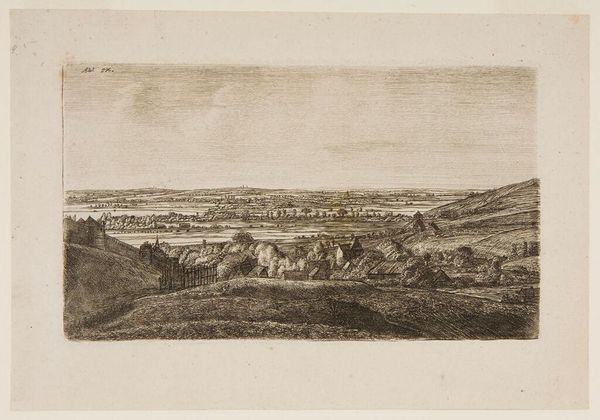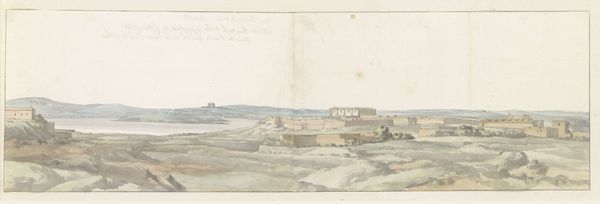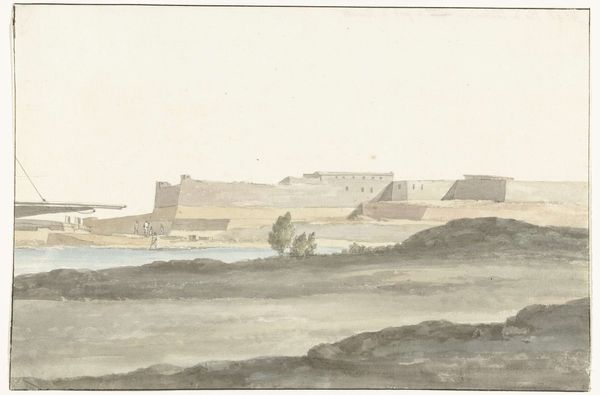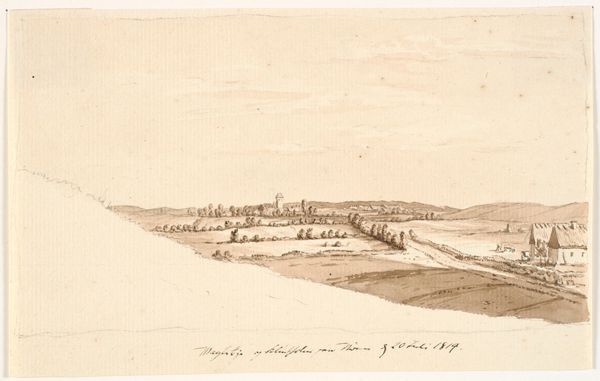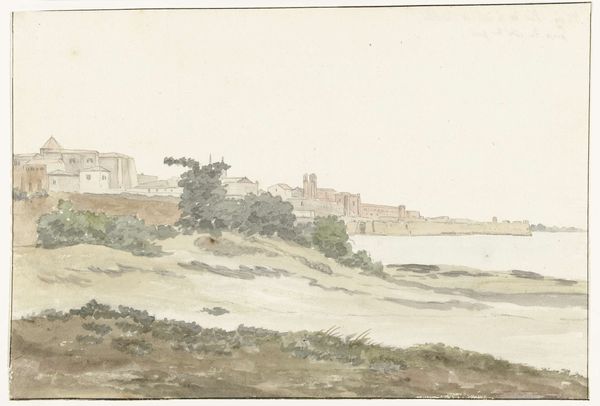
Dimensions: height 166 mm, width 1017 mm
Copyright: Rijks Museum: Open Domain
Curator: Let's turn our attention to Louis Ducros' "Gezicht op Alcamo," painted in 1778 and held here at the Rijksmuseum. Ducros was working en plein air, capturing this scene with watercolor. Editor: My first impression is how muted the colors are, almost a sepia tone. It evokes a sense of looking at a memory, something distant and perhaps idealized. Curator: Precisely! Consider that 18th-century viewers were highly literate in symbolic landscapes. The panoramic vista was often deployed to signify progress and enlightenment ideals. Alcamo, perched as it is, suggests dominion, the small cluster of buildings sitting harmoniously within the natural landscape. Editor: I am very interested in that harmony you mention. Watercolors were frequently chosen for landscapes and travel sketches—portability mattered. What brushes were used? What paper supports could he source readily during his travels? The fact he worked on this panorama on-site speaks volumes about his methods and how art was created at the time. Curator: That commitment to capturing the essence of a specific place through observation fits perfectly within the Romantic tradition that was emerging. Note how the distant mountains are rendered, fading into the mist, suggesting a certain sublime grandeur. The scene is about more than the buildings—it is equally focused on conveying a specific mood. Editor: Though, let's not over-idealize "en plein air," I'd bet this work went through various material states: sketches, layering, and refinement back in a studio! The very thin pigment, spread evenly, may have required considerable processing or maybe this very wide paper was not so absorbent and required extra treatment. There were undoubtedly constraints within these practices. Curator: Fair enough, material processes shaped what Ducros was trying to achieve with a clear symbolism of the location. In a sense, the town becomes almost emblematic in his rendering. It represents not just Alcamo, but perhaps a certain type of aspiration for harmonious progress during the age of enlightenment. Editor: Indeed. Thinking about how landscape artists like Ducros handled these practical concerns and the very materials employed sheds light on the realities of how landscapes came to embody that spirit of the age. The physical stuff and the process, shaped by culture, shaped its vision.
Comments
No comments
Be the first to comment and join the conversation on the ultimate creative platform.



